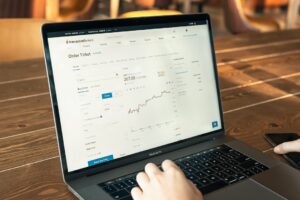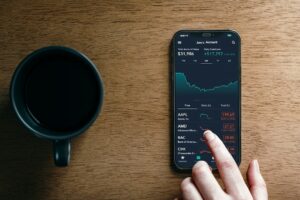The Basics of Trading Gold in Forex: A Beginner’s Guide
Gold has been a valuable and sought-after precious metal for centuries. It has been used as a store of value, a medium of exchange, and a symbol of wealth and power. In the world of forex trading, gold holds a special place as a popular and highly traded asset. In this beginner’s guide, we will delve into the basics of trading gold in forex and explore the factors that influence its price.
Why Trade Gold?
Gold has several unique attributes that make it an attractive investment option. Firstly, it is considered a safe-haven asset, meaning that investors often flock to gold during times of economic uncertainty or market volatility. This is because gold tends to retain its value or increase in price when other financial instruments, such as stocks or currencies, are experiencing significant fluctuations.
Secondly, gold is often used as a hedge against inflation. When inflation rises, the purchasing power of paper currencies decreases. In such situations, investors turn to gold as a way to protect their wealth from eroding due to inflationary pressures.
Lastly, gold has a strong historical track record of maintaining its value over time. Unlike fiat currencies that can be subject to government policies or economic conditions, gold has been a reliable store of value for centuries. This long-term stability makes it an attractive asset for investors looking for a safe and stable investment option.
How to Trade Gold in Forex?
Trading gold in the forex market involves speculating on the price movements of gold against a base currency, typically the US dollar. Gold is quoted in terms of its price per ounce in the forex market. For example, if the current price of gold is $1,800 per ounce, a forex trader would buy or sell gold based on their analysis of whether the price will rise or fall.
There are several ways to trade gold in forex, including spot trading, futures contracts, and contracts for difference (CFDs). Spot trading involves buying or selling physical gold at the current market price. However, this method requires significant capital and involves logistical challenges such as storage and insurance.
Futures contracts, on the other hand, involve buying or selling gold at a predetermined price and date in the future. This method is popular among institutional investors and requires a deep understanding of the futures market.
CFDs provide a more accessible way for retail traders to trade gold in forex. CFDs are derivative products that allow traders to speculate on the price movements of gold without owning the underlying asset. With CFDs, traders can go long (buy) or short (sell) gold, depending on their market outlook. This flexibility allows traders to profit from both rising and falling gold prices.
Factors Influencing Gold Prices
As with any financial instrument, the price of gold is influenced by a wide range of factors. Understanding these factors is crucial for successful gold trading in the forex market. Here are some of the key drivers of gold prices:
1. Economic Data: Gold prices are sensitive to economic data releases, especially those related to inflation, interest rates, and GDP growth. Higher inflation or interest rates tend to drive up gold prices, while strong economic growth may dampen the demand for gold.
2. Geopolitical Events: Geopolitical tensions, such as wars, political instability, or trade disputes, can have a significant impact on gold prices. Investors often turn to gold as a safe-haven asset during times of geopolitical uncertainty.
3. US Dollar Strength: As gold is quoted in US dollars, the strength or weakness of the US dollar can influence gold prices. When the US dollar weakens, gold tends to rise in value, as it becomes cheaper for holders of other currencies.
4. Central Bank Policies: Central bank actions, such as interest rate decisions or quantitative easing measures, can affect gold prices. Changes in monetary policy can impact inflation expectations and currency values, thus influencing gold prices.
5. Investor Sentiment: Market sentiment and investor behavior can also play a significant role in gold prices. Fear and uncertainty in the financial markets can drive up the demand for gold as a safe-haven asset, pushing prices higher.
Risk Management in Gold Trading
Like any form of trading, gold trading in forex carries certain risks. It is crucial for beginners to implement effective risk management strategies to protect their capital. Here are some key risk management techniques to consider:
1. Stop Loss Orders: Placing stop loss orders can help limit potential losses by automatically closing a trade if the price reaches a predetermined level. This protects traders from excessive losses in case the market moves against their position.
2. Position Sizing: Properly sizing your positions is essential in managing risk. Avoid risking a significant portion of your trading capital on a single trade. A common rule of thumb is to risk no more than 1-2% of your account balance on any given trade.
3. Diversification: Avoid putting all your eggs in one basket by diversifying your trading portfolio. By trading multiple instruments and markets, you can spread your risk and reduce the impact of any single trade or market event.
4. Education and Analysis: Continuously educate yourself about the forex market and gold trading strategies. Conduct thorough analysis and use technical indicators or fundamental analysis to make informed trading decisions.
Conclusion
Trading gold in forex can be a lucrative and exciting venture for beginners. By understanding the basics of gold trading, including its unique attributes, factors influencing its price, and effective risk management strategies, beginners can navigate the gold market with confidence. As with any form of trading, continuous learning, practice, and discipline are key to success in trading gold in forex.






